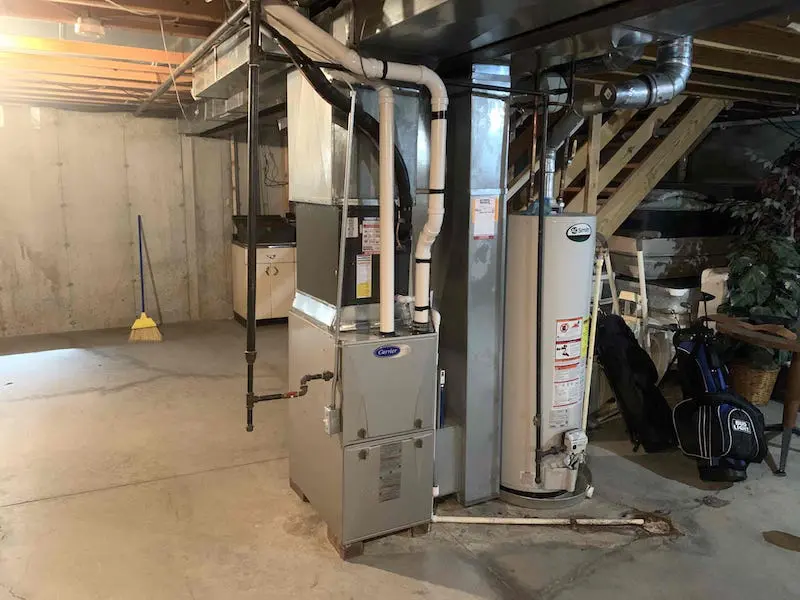Picking the Right Replacement for Your Home’s Furnace

Thinking of replacing your old furnace with a more efficient home heating system? Work with one of the area’s best heating companies to make sure your choice is right for
- your home’s size,
- your lifestyle and
- how long you plan to stay in the home.
Here are 13 considerations we always take into account at Jansen Heating & Cooling:
1. Energy Efficiency
- Look for High Efficiency Ratings: Choose systems with high Annual Fuel Utilization Efficiency (AFUE) ratings for furnaces or high Heating Seasonal Performance Factor (HSPF) ratings for heat pumps.
- ENERGY STAR Certification: Opt for systems that are ENERGY STAR certified, which indicates they meet strict energy efficiency guidelines set by the U.S. Environmental Protection Agency.
2. Fuel Type
- Natural Gas: Common and cost-effective in Greater Cincinnati.
- Electric: Often used in areas without natural gas infrastructure. Consider heat pumps for greater efficiency.
- Oil: Less common but still used in some areas. Usually more expensive and less environmentally-friendly.
- Propane: An alternative where natural gas is unavailable.
- Renewables: Explore options like solar or geothermal systems for eco-friendly heating.
You might also want to consider a dual fuel heating system for your Cincinnati–area home.
3. System Type
- Furnaces: Forced-air systems using gas, oil or electricity. Good for colder climates like the Ohio-Kentucky-Indiana Tri-State.
- Boilers: Use water to heat the home. Can be more efficient and provide a more consistent temperature.
- Heat Pumps: Efficient for moderate climates. Can both heat and cool your home.
4. Size and Capacity
- Proper Sizing: Ensure the system is appropriately-sized for your home. Your Jansen HVAC professional can perform a load calculation to determine the right size.
5. Climate Considerations
- Local Climate: Choose a system well-suited to your climate. For example, heat pumps are great for moderate climates, while high-efficiency furnaces are better for colder areas.
6. Installation and Maintenance
- Professional Installation: Ensure the system is installed by a qualified professional–like a member of Jansen’s team–to guarantee optimal performance and efficiency.
- Maintenance Requirements: Consider the maintenance needs of the system and choose one that you can maintain properly.
7. Cost and Rebates
- Upfront Cost: Consider your budget, but also think long-term. More-efficient systems may cost more initially but save on energy bills.
- Rebates and Incentives: Look for federal, state and local rebates and incentives for energy-efficient systems.
8. Smart Technology
- Smart Thermostats: Integrating with smart thermostats can optimize energy use and improve comfort.
- Home Automation: Consider systems that can integrate with your existing home automation setup.
9. Environmental Impact
- Eco-Friendly Options: Look for systems with lower carbon footprints. Heat pumps and geothermal systems are generally more environmentally-friendly.
- Refrigerants: If choosing a heat pump, consider the type of refrigerant and opt for one with a lower Global Warming Potential (GWP).
10. Noise Levels
- Quiet Operation: Consider noise levels, especially if the unit will be placed near living areas or bedrooms.
11. Future-Proofing
- Longevity and Durability: Choose a system known for reliability and longevity.
- Upgradability: See if the system can be easily upgraded to support future heating technology advancements.
12. Zoning Capabilities
- Multi-zone Systems: If your home is large or has varying heating needs, a system with zoning capabilities can provide more targeted and efficient heating.
If you shop with Jansen Heating & Cooling, your technician will walk you through a number of options in your price range.
Once you have made a selection, Jansen will provide an excellent Cincinnati furnace installation–making sure your heating system works well from Day One.
